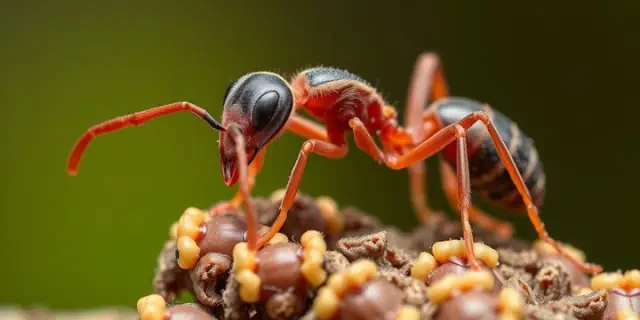Unleashing the Power of Language: The Impact of Words on Feelings, Decisions, and Behaviors
View pictures in App save up to 80% data.
In a pioneering study featured in the renowned journal Cell Reports, scientists have achieved remarkable advancements in comprehending the interplay between neurotransmitters in the human brain and the emotional facets of language processing. The findings illuminate the intricate relationship between linguistic elements and emotional perception, indicating a deep link between neurotransmitter release and the emotional significance of the words we encounter in daily interactions. This global collaboration, spearheaded by the distinguished computational neuroscientist Read Montague at the Fralin Biomedical Research Institute, brought together more than 20 researchers and medical professionals, highlighting the collective effort behind this innovative research.
The study concentrated on neurotransmitters like dopamine and serotonin, which are commonly linked to mood regulation and emotional reactions. Historically, it was believed that these neurochemicals indicated the positive or negative aspects of experiences. Nonetheless, recent discoveries suggest that these neurotransmitters are also vital in shaping how individuals understand the subtleties of language. This connection between brain chemistry and linguistic interpretation is fascinating and could indicate a more profound evolutionary advancement in human cognitive abilities.
Montague and his team embarked on this research to examine the theory that brain systems, which initially developed for the purpose of survival and responding to environmental dangers or rewards, could also play a vital role in understanding the meanings of words. This idea holds particular importance for complex social creatures such as humans, who depend heavily on nuanced verbal communication for their everyday interactions and survival tactics. Effectively grasping the emotional nuances of language may not only facilitate human connections but also influence mental well-being.
This research marks a groundbreaking effort to assess the simultaneous release of various neurotransmitters triggered by emotional language content. It was carried out on patients who were receiving deep brain stimulation surgery, enabling real-time monitoring of neurochemical activity in targeted areas of the brain. By presenting emotionally significant words on a screen throughout the procedure, the scientists successfully collected data on neurotransmitter fluctuations through sophisticated measurement methods.
Recent discoveries have shed light on unexpected roles of the thalamus, a brain region generally recognized for its role in sensory processing. Historically, the thalamus has not been connected to language or emotion. However, new research has revealed that neurotransmitter levels fluctuate in reaction to different emotional words, indicating a complex interaction between various brain areas during language interpretation. This finding suggests that regions not typically associated with emotional and linguistic functions might still play a crucial role in processing important information, aiding in immediate decision-making.
Participants in the study underwent deep brain stimulation, during which electrodes monitored neurotransmitter release in response to positive, negative, and neutral words. The findings revealed a complex interaction of neurotransmitters that correlated closely with the emotional weight of the words presented. This detailed insight marks a significant advancement in our comprehension of language processing, illuminating the distinct patterns emerging across different brain areas and their processing dynamics.
As a crucial component of the validation process, the team carried out relevant studies employing rodent models. They leveraged advanced techniques such as optogenetics to selectively stimulate certain neurons and monitor their reactions, reflecting the processing patterns of the human brain. This research across different species supports the findings and enhances our comprehension of the neurochemical networks that shape our emotional interpretations of language.
The research highlights that language transcends its role as a communication tool, acting instead as a powerful driver of behavior and choices. By uncovering the unique neuromodulator patterns associated with various emotional tones, the study enhances our comprehension of how people may respond in diverse ways to identical verbal messages based on the emotional nuances present. This insight could prove significant for fields like mental health, underlining the critical need to acknowledge the impact of emotional language.
Earlier studies in neuroscience predominantly examined neurotransmission in relation to decision-making. In contrast, the present research takes a novel approach by focusing on the emotional impact of language, shedding light on cognitive dimensions that have often been neglected. The researchers argue that, in contrast to numerous other species, humans have a sophisticated ability to understand language that incorporates both context and emotional nuances. Consequently, our processing of emotionally charged words could reveal fundamental cognitive processes linked to survival, creating a connection between linguistic expression and biological needs.
Additionally, the vocabulary utilized in the study was carefully curated from the Affective Norms for English Words (ANEW) database, which classifies words according to their emotional value. This thorough methodology enabled the research team to develop a framework that can examine how specific words provoke different emotional reactions, thereby enhancing the comprehension of human thought processes and language.
As the scientific community enthusiastically examines these discoveries, the repercussions extend beyond neuroscience to impact psychology, linguistics, and therapeutic methodologies. Such research lays the groundwork for future investigations into the complex connections among emotional cognition, language understanding, and neurobiology. It paves the way for new explorations into how language molds human experiences and affects mental health results.
As research progresses and gains further validation, it is essential to recognize the significant impact it could have across multiple disciplines, including cognitive neuroscience, psychology, and artificial intelligence. Gaining insights into how individuals emotionally connect with language might pave the way for innovative approaches in creating technologies that can more effectively understand and react to human emotions via language processing mechanisms. This convergence of neuroscience, linguistics, and emotional intelligence presents a thrilling avenue for scientific inquiry.
Subject of Research: People Article Title: Emotional words evoke region and valence-specific patterns of concurrent neuromodulator release in human thalamus and cortex News Publication Date: 28-Jan-2025 Web References: References: Image Credits: Clayton Metz/Virginia Tech
Keywords: Health and medicine, Neuroscience, Neurotransmitters, Emotion, Dopamine, Serotonin, Cognitive neuroscience.
Explore additional insights from the world of Science.
Sign up to receive the newest updates directly in your inbox.


















